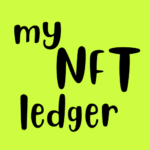By crypto.news

Disclosure: The views and opinions expressed here belong solely to the author and do not represent the views and opinions of crypto.news’ editorial.
The internet is a core pillar of the modern information order, yet an estimated two billion people are still without access. It may be because it is not commercially viable for traditional telecom operators to bring internet services to certain remote geographical regions despite the fact that:
- Money is tokenized by 134 countries, representing 98% of global GDP, continuing to explore the implementation of central bank digital currency (CBDC). This may not include the United States since the US House Passed Bill FIT 21 banning the Federal Reserve from issuing a CBDC. If the Senate also approves FIT21, such a CBDC ban will stall the tokenization of the US financial sector;
- Mobile payments are replacing cash in over 23 countries. A Federal Reserve Bank of San Francisco report found that cash payments accounted for just 18% of all US payments in 2022.
Wireless traffic—particularly with tokenization and mobile payments replacing paper money—is estimated to increase by approximately 80 times by 2030 relative to 2020. To expand internet access to users through their cell phones, founders of Helium Mobile Amir Haleem, Shawn Fanning (who also developed Napster, one of the first peer-to-peer file-sharing platforms, in 1999), and Sean Carey in 2013 created a decentralized blockchain-based wireless LoRaWAN infrastructure (DeWi) to support Internet of Things (IoT) devices. Helium Mobile leverages blockchain technology and crypto economics to deliver wireless coverage and connectivity through decentralized peer-to-peer networks built and operated by individuals to effectively use all existing network resources, including private wireless access systems owned by individuals.
Since the increased wireless traffic raises concerns about congestion and connection failures from signal loss, in 2019, the company released Helium Hotspots with blockchain and digital asset payouts to expand Helium Mobile’s cellular coverage. The aim was to create a world with continuous wireless connectivity built and run by the people who use it—and priced so they can afford it.
A hotspot is a wireless access point that lets users connect phones, tablets, computers, and other IoT devices to the internet. They’re built into most smartphones, but users can also get dedicated mobile hotspot devices, which deliver faster speeds, connect more devices, and have a longer battery life than a phone.
Helium Hotspots act as miniature cell towers, creating a peer-to-peer wireless network to connect small, low-power devices over long distances through an ever-growing constellation of user-owned Helium hotspot towers in more than 170 countries. Users need a mobile phone plan with hotspot data to connect a smartphone hotspot or personal device.
Helium Mobile’s cell service runs on a mix of towers, such as T-Mobile in the US, Telefonica in Mexico, and Helium Hotspots, which individuals host. These hotspot operators receive MOBILE tokens/NFTs (HNT) as payment, as do phone subscribers who opt into Helium Mobile’s location tracking service, which is theoretically meant to help guide where new hotspots should go. Helium Mobile subscribers and hotspot deployers are equal parts of a network that creates dynamic wireless coverage. This enables communities to improve their internet and cell coverage without the infrastructure of traditional telecom companies. As Amir Haleem, CEO of Nova Labs and the creator of the open-source Helium Network, noted about the telecom industry’s traditional top-down network-buildout model:
“It’s not really a sustainable model, in my opinion. I think it’s starting to break now.”
Amir expects more traditional mobile network operators to support DeWi models in the future. Especially with Helium Hotspots, users can earn HNTs priced at $3.46 as of June 24, 2024, to provide essential connectivity to nearby Helium Mobile subscribers.
Helium Mobile minted nearly one million Hotspot HNTs to enable other decentralized physical infrastructure projects (DePINs) to verify location data using Solana blockchain technology. Solana relies on network participants to run the software that keeps the system running. Participants may stop contributing their computational resources if the monetary rewards for participation are not attractive enough to incentivize these contributions. At current levels, subscribers to Helium Mobile who use Discovery Mapping are earning over 2,000 MOBILE tokens HNT per day, according to CoinDesk.
The fast, scalable, and low-cost Solana blockchain charges Helium Mobile users a small fee (average transaction fee is 0.000014 SOL) paid in SOL tokens, including sending tokens, staking tokens, making payments, swapping tokens, minting NFTs, claiming rewards from Helium Hotspots, and all on-chain Helium transactions.
Helium Mobile has been adding thousands of new customers in the US with its $20 per month unlimited 5G cellular plan nationwide by working with Google to bundle its Pixel 8 smartphone with Helium services and hotspots. The company also supports various other devices, including Solana Saga, the first web3 native phone.
Last year, Solana Mobile, a subsidiary of Solana Labs, unveiled the Android-based phone Solana Saga. The phone is designed to give users a mobile-centric web3 experience, representing an exciting leap forward in mobile technology. The phone combines the everyday utility of smartphones with the heightened security and privacy necessity of the digital currency landscape by providing seamless access to Solana blockchain defi protocols.
Phone users can directly access decentralized applications (dApps), digital wallets, NFT marketplaces, web3 applications, and other blockchain platforms without needing multiple intermediaries or extra devices directly from the Solana Saga phone.
Helium Mobile’s mission to transform the $3106.1 billion global wireless network infrastructure with its offering of a licensing program for hotspots and web3 phone devices is a significant milestone for the industry that seems to be ready to embrace DeWi. Communication giants like AT&T, T-Mobile, NTT, Alibaba, and Tencent already incorporated blockchain technology for various purposes like identity and access management, digitally tracking business processes, communication, data storage, and computation.
World Mobile has been tackling wireless dead zones with balloons and towers in the UK by providing token payouts from the Cardano blockchain. And telecom giant Vodafone decided to fuse blockchain technology with smartphone functionality by integrating cryptocurrency wallets directly into SIM cards. So, there are already several third-party manufacturers and vendors for the IoT network, according to Helium’s website. However, Helium Mobile is currently the only blockchain-based cell phone coverage device provider. As Amir Haleem commented:
“Licensing the Helium Mobile tech stack is a pivotal step in our mission to deliver accessible and cost-effective wireless connectivity to communities across the US and around the world. We believe that access to the internet is a basic human right, and for many people that access is through a smartphone. Enabling other device manufacturers to leverage our technology will help accelerate a global wireless infrastructure revolution. This initiative is about empowering individuals and communities, driving progress, and building a more connected world.”
Staking provides a means of earning rewards while holding specific digital assets. If a digital asset you possess supports staking—such as Ethereum, Tezos, Cosmos, Solana, Cardano, and others—you can “stake” a portion of your holdings and earn rewards.
Last July, the US Internal Revenue Service issued new guidance clarifying when staking rewards of digital assets are subject to taxation as income. The agency considers staking rewards to be taxable both as “Other Income” disclosed on Form 1040 Schedule 1 when you receive and have dominion and control over the digital asset and then taxed again as capital gains upon disposal of the digital asset disclosed on Form 1040 Schedule D.
To determine your digital asset staking taxes, you’ll need to report the fair market value of your staking rewards upon receipt or when you have dominion and control of the digital asset, which serves as your cost basis. You’ll use this cost basis to calculate your corresponding capital gains or losses if and when you sell your staking rewards.
With the implementation of Rev. Rul. 2023-14, taxpayers such as Helium Mobile users involved in staking can generally expect to pay taxes on their HNT rewards upon acquisition, even if they have not converted their digital assets into fiat.
For proposed digital asset tax disclosure for brokers and collectible NFT taxation rules, see Tokenization of art, gaming, and the future of NFTs | Opinion. For digital asset tax disclosure rules, see: What you need to know about the IRS’s crypto question on tax returns | Opinion
Editor’s note: This article was written before the rumors about Solana being under investigation for its native token, SOL. Thus, it doesn’t include any discussion of the SOL being characterized as a security by the SEC last year in their cases against Binance.US and Coinbase. This investigation potentially might influence every project related to Solana. The editorial team will be following this news to update you on the matter.

